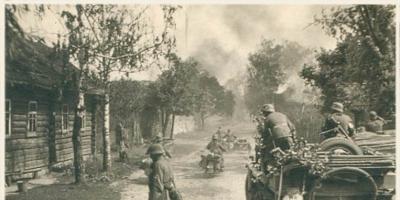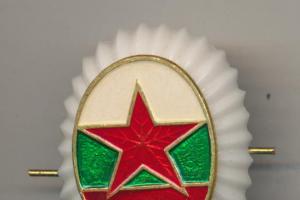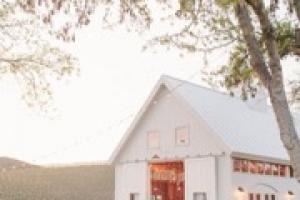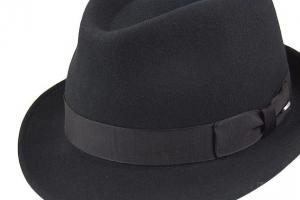The veranda is a great place for relaxation, family tea parties and friendly gatherings. In the warm season, the terrace becomes the most popular part of the house and a great opportunity to gather dear people together. However, with the onset of cold weather, the idyll ends - no one wants to sit on a cold veranda. But the situation can be easily corrected - all you need to know is how to properly insulate the veranda. By the way, proper insulation will not only preserve the usual comfort, but will also help protect the corners of the extension from the formation of black spots that occur under the influence of low temperatures.
What is the best way to insulate a veranda?
The range of thermal insulation materials is quite wide, so the selection process remains more relevant than ever. Meanwhile, there are samples that have proven themselves best. These are the ones you should give preference to when purchasing.
The leaders in the number of positive reviews are mineral wool and polystyrene foam. A profitable way to insulate a terrace, and even save a significant amount. To improve the created effect, a foam pad is used. Metallized sheets reflect cold street air and prevent precious heat from escaping. Penofol is a high-tech heat insulator consisting of foamed polyethylene, covered aluminum foil. This material can be used both in tandem with other thermal insulators and alone. Of course, the first option is more effective, because allows you to use the benefits of protective raw materials to the maximum.

How to insulate a wooden veranda?
The problem of how to insulate a cold veranda begins to worry the owners of country cottages with the onset of the first frost. Will you really have to leave the tradition of relaxing on the terrace until spring? Not at all - warm yourself up and continue enjoying life!
Tools and building materials
- insulation (penofol, mineral wool, expanded polystyrene, etc.);
- polystyrene foam (thickness at least 10 cm);
- nails, hammer, nail gauge;
- scissors, hacksaw;
- tape measure, pencil;
- scotch;
- paint, brushes;
- putty knife.
We insulate the floor
If you are thinking about how to insulate a plank veranda, but don’t know where to start, then experts advise that the first step is to protect the floor. Some people mistakenly believe that it is not necessary to insulate floors and that you can limit yourself to just the walls and ceiling, but this opinion does not correspond to reality. If there is no continuous foundation strip, then the question of how to insulate the floor on the veranda takes on a different meaning. Defining.

The seams between the boards are puttied, then painted and punched with penofol on the underside. The inside of the floor can be insulated with polypropylene-based linoleum or felt-based carpet. Arranging a second floor is considered a more complex, but also more reliable method. It is used as a rough draft, followed by installation of thermal insulation and finishing coating. The only thing, keep in mind that this will significantly reduce the ceiling height.
How to insulate walls?
How to insulate a veranda from the inside? If this problem is relevant to you, then get ready for the fact that you will have to completely replace the wall cladding. The boards are removed using a nail gun. To prevent the tool from leaving marks, place a piece of cardboard under it. The more carefully you remove the old boards, the easier it will be to install new ones. One of the most simple solutions- attach insulation with a foil layer (10-15 mm thick) to wooden brackets, and finish the walls with MDF panels on top.
If the walls are brick, then it is necessary to make a sheathing of transverse wooden beams with a section of 25x40 mm. In this case, the insulation used is thicker - 25-30 mm. It must be cut into strips and laid between the beams. There should be no gaps.

The following method is no less popular. After carefully measuring the area, penofol is cut into pieces of the appropriate size. Leave a couple of centimeters at the top and bottom for folding. Cover the walls with material and secure the edges with tape. Next, polystyrene foam is laid on top of the penofol. The panels should fit together as tightly as possible. In narrow, hard to reach places you will inevitably need pieces of non-standard shapes and sizes, which can be cut using an ordinary hacksaw.
Nail the trim. If the thickness of the insulation is chosen correctly, then the boards will not bend and will “sit” perfectly. The final stage— painting the sheathing and replacing the ceiling plinth.
How to insulate the ceiling on the veranda?
A hydraulic barrier is mounted on the ceiling, then the surface is sheathed with 27x27 mm timber. The gaps between the beams depend on the thickness of the insulation, but it is not recommended to leave intervals greater than 0.8 mm. The hydrobarrier is attached horizontally, the seams are glued together with metal tape. Sheathing beams are nailed vertically.

Penoplex sheets are inserted between the bars and secured with wide-headed dowels. A heat reflector is placed on top of the penoplex, for example, Ecofol (foamed polyethylene covered with a lavsan metallized film). The heat reflector is temporarily secured using a stapler. Later he is pinned down by a blockhouse. The blockhouse is installed in concentric rows, which is necessary to create a perfectly flat surface.

The blockhouse can be replaced with clapboard or OSB. When carrying out work, use only serviceable tools, remember the protective equipment (mask, gloves). If you spray foam, ventilate the room from time to time.
How to insulate a summer veranda?
If the veranda is not in the house, but is an extension, this does not mean that insulation is impossible. If you have a canopy or roof, this is quite possible.
You should start again from the floor. Along the perimeter of the veranda, paved with concrete or stone, a small fence made of building blocks or bricks is laid. Then the floor is covered with two layers of roofing felt, which will simultaneously serve as a hydro- and vapor barrier. The selected insulation is laid on top (layer thickness - 10 cm), then a vapor barrier membrane and a finishing coating are laid.

The next step is double-glazed windows placed right under the roof. The roof is insulated like a “pie”: waterproofing film on the rafters, insulation, vapor barrier, decorative coating.
A terrace with wooden floors is insulated somewhat differently. The floors are opened and insulation is laid between the joists. However, it is necessary to lay waterproofing under it, because... in this case the foundation is under summer veranda, as a rule, is absent. A timber fence is installed around the perimeter, which is used as a basis for double-glazed windows.
Features of insulation from the outside
If you have recently made repairs and don’t want to start construction work all over again, you can insulate the veranda from the outside. This will provide a wonderful opportunity to refine the façade and give the building a modern look.

The sheathing is attached horizontally or vertically to the walls. The intervals between the guides are filled with insulation and moisture insulation. The last thing to attach is the cladding, for example, metal siding or decorative panels, finished with powder coated honey.
Now you know how to insulate a veranda, which means your home will always be cozy and comfortable. Even on the chilliest autumn evenings, spring and good mood will reign on the terrace!
Veranda: photos of insulated options





Video: how to insulate a veranda
In this part of the article about building an extension to a house, we’ll talk about internal insulation ceiling, walls and floor.
Fortunately, I have many friends whose hands grew out of place. It is fortunate that each of them specializes in a certain type of work. Having decided to insulate the newly built rooms from the inside, I called for help from a former classmate who specialized in apartment renovation.
Covering the ceiling and walls with plasterboard
Covering walls with plasterboard slabs allows you not only to insulate the room, but also to level the walls, and also achieve significant sound insulation. Once you invest money and labor in insulation, you will save on heating every year.
There is also a drawback to this construction procedure: covering the walls steals some of the usable space from the room.
Interior work of this kind can be done at any time of the year, especially if the room is heated. Minor temperature changes are not harmful to finished sheets of drywall. It was such a lucky coincidence that during the winter we managed to completely sheathe one of the rooms.
We started by installing profiles on the ceiling. For this purpose, narrow starting UD profiles were screwed strictly according to the level with dowels on two opposite walls, right at the junction of the walls and the ceiling. The wooden ceiling beams to which the wide main LED profiles will be attached go from window to window, so the starting profiles, in order to attach to the beams, must go perpendicular to them.
This means that the starting profiles will be fixed parallel to the beams, in the position of the letter P outward. The main profiles, on the contrary, are secured with self-tapping screws to wooden beams in the position of the letter P inward. On the ceiling, both edges of each segment of the main SD profile fit into the groove of the starting UD profile and were secured in them with short screws.

The distance between the profiles on the ceiling is 40cm, on the walls 60cm.
I think the principle is clear - keeping even fixed slabs in a horizontal position on the ceiling is much more difficult than when they are in a vertical position. Therefore, we will screw them on the ceiling more often, i.e. more reliable than on the walls.
When calculating the location of the profiles, it is necessary to take into account the size of the plasterboard sheets, because the joint of the sheets must be in the middle of the profile width so that the plasterboard can be secured. The dimensions of 40 and 60 cm were not chosen by chance; they are determined by the width of the plasterboard, which is 120 cm.
The profiles are fixed to the walls and ceiling with suspension plates (I chose universal 60/125 due to the length reserve). Each suspension was secured with two dowels to each wooden ceiling beam, and on the walls every 40 centimeters. This figure is not strict; it is better to attach it to a foam concrete block and brick than to cement joints between them.
Due to the curvature of the walls, the same part of the profile is adjacent to the wall, sometimes closely, sometimes at a small distance. Therefore, the next operation was to vertically align the profile to a one and a half meter level. Having leveled the profile, both edges of the suspension were bent along its perimeter. The suspension was attached to the SD with small self-tapping screws, popularly called “fleas”.

Part of the suspension plate on both sides of the profile remains free. It can be cut, but it is easier to bend it back towards the wall. In case of insulation with glass wool, they will serve as its additional holders.
The profiles are made of soft metal, so at the joints the edges of one part of the profile are slightly crushed by hand and pushed a couple of centimeters into the other part, securing everything with the same “fleas”. In principle, there is no waste left.

If the ceiling profiles are leveled with the starting UD profile, then the two outermost ones are first mounted on the walls, and the rest are leveled along them.
Convenience of delivery, relative cheapness, ease of installation - these are the positive characteristics of this building material. Another good thing about drywall is the ability to mark with a pencil levels on its surface, the projection of profiles, and places where screws are screwed in with metal screws.
We worked mainly as a screwdriver. We cut the drywall with a special knife for drywall and foam plastic. It looks the same as a paper cutter, only bigger size, blade thickness and length.
The sheet size is 1.2 m by 2.5 m, and the height is 2.35 m, the width and length of the smaller room are 3 and 4.2 m. Therefore, you get a lot of scraps that have to be fitted above/under windows and pipes. It is also good to work with solid sheets because only vertical profiles are needed for them (on the walls). When you “sculpt” the scraps, you have to additionally install horizontal profiles to securely fasten each piece of drywall around the entire perimeter. But in the end, plasterboard slabs create flat surface. It will become ideal after puttying, then the joints of the plates and the heads of the screws will not be visible.

On the inside interior wall I considered the insulation unnecessary, but due to its curvature I decided to level the surface with plasterboard on one side.
The Izover I bought was wound into rolls of two layers. By unwinding the roll, you get a sheet 5 cm thick, which easily separates into two sheets, each 2.5 cm thick. It is worth noting that this nuance was very prudently conceived by the manufacturer. By buying one roll, you will not rack your brains over the problem of more/less insulation. For example, I laid sheets 5 cm thick on the ceiling, since only the roof protects the building from above, and 2.5 cm on the walls, since they are already insulated from the outside with polystyrene foam and half the thickness of Izover will be quite enough.
I have used this material before, insulating the roof of a barn with it. This is lightweight mineral wool, which is convenient to cut with the same drywall knife.
Since the roof is pitched, we started attaching the drywall in small pieces from the side of the ceiling above which the lower edge of the roof is located. The clearance there is minimal, therefore, having secured the first row of narrow strips of drywall, we immediately inserted the same narrow piece of Izover between it and the roof. Next, solid sheets of plasterboard were fixed to the ceiling, since the distance to the roof had become decent, and it was feasible to lay large pieces of Izover across the entire width of the room.

The same song applies to wall insulation, but the inconvenience here is of a different nature: the insulation must be kept in a vertical position until we fix the sheet of drywall. As it turned out, this issue is solved by primitively engaging the edges of the Isover with the profiles. We cut Izover with a width equal to the distance between the profiles fixed to the walls.

The result of internal insulation work
The internal insulation made itself felt literally the next day after we completed the work. At night I left the radiator in the room on the middle position. In the morning the thermometer showed +24°C, despite the fact that the temperature outside was -5°C.
I hope that the “thermos” effect will keep the indoors cool even in the summer heat.
The veranda is an excellent place where you can have tea with family or friends, or just relax. In hot weather, it turns into the most popular area of the house, but when the temperature drops, the situation changes dramatically, because no one wants to sit in the cold.
But there is a way out of this situation. You just need to find out how to insulate the veranda and conduct necessary processes. Properly performed insulation will help preserve established amenities and prevent the occurrence of black spots that form when the temperature drops.
The number of materials that can be used for insulation is simply enormous. But among them we can single out those that are given the greatest preference among consumers, because they have proven themselves to be excellent with their positive qualities.
Mineral wool
- The material allows air to pass through, which reduces humidity inside the room.
- The insulation is fire-resistant and is excellent for verandas of wooden buildings.
- It has excellent water resistance, repelling moisture and allowing you to maintain a favorable indoor microclimate.
- Mineral wool suppresses sounds perfectly. A veranda using this material eliminates noise from the street, adding additional amenities.
- The insulation is environmentally friendly. It does not contain any harmful substances and has no odor.
Mineral wool is used for insulation of floors, ceilings, walls and ceilings. There is a huge assortment on the market, which allows you to choose the ideal type from among various manufacturers. It is suitable both for covering the veranda and for complete insulation of the house.

Styrofoam
- Polystyrene foam provides insulation without much effort. The sheets are fastened using special glue or mechanical fasteners.
- The structure of the material allows you to retain heat inside the terrace in winter and create coolness in summer.
- The product does not contain toxic substances. It does not harbor mold and various types of insects. It is quite often used behind drywall or under floor screed.
- It is used as insulation for ceilings, walls and flooring.

Penofol
- The insulation is suitable for both independent and combined use with other similar products.
- Installation is carried out without difficulties. The material is fire resistant and is ideal as insulation for houses with wooden verandas.
- Penofol does not emit or contain any substances hazardous to health.
- The product has a foil layer, thanks to which the veranda receives an additional level of protection from winter frosts.
- The material perfectly resists the entry of cold street air.
Expanded polystyrene
The product's characteristics are very similar to polystyrene foam. It is highly durable and can be easily finished. Perfectly suited as insulation for a terrace.

Polyurethane foam
This product comes in 3 different forms: flexible slabs, rough panels and inflatable form. The advantages include easy installation and low weight. The disadvantages are poor tolerance to mechanical stress and significantly high cost.
Polystyrene foam and mineral wool are the most popular among consumers. They are profitable and excellent insulation for the veranda, which have a number of positive properties and allow you to save a decent amount of money.
The process of insulating the veranda
Insulating a veranda with your own hands is quite simple if you thoroughly understand all the stages of the work being carried out. Basically, the terrace is built on the same foundation as the house. Usually this concrete plates or a monolithically poured concrete base. In winter, 20% of the heat leaks through it, so before insulating the veranda, you need to insulate the foundation of the structure. This process is carried out without any particular difficulties. Polystyrene foam boards need to be glued to the surface of the base.

Floor
First of all, when insulating a terrace, the floor is insulated. Some people do not attach much importance to this process, limiting themselves only to the treatment of ceilings and walls, believing that it is not necessary to insulate floor surfaces and are deeply mistaken. In wooden verandas the floor is often laid as follows: on the ground or concrete base logs are laid on which boards are then placed and installed. For insulation it is necessary to carry out the following steps:
- remove boards;
- between the installed joists it is necessary to secure wooden beams with screws;
- insulation is placed in the resulting compartments - mineral wool, penoplex or foam boards;
- when settling mineral wool, additional insulation is required using foil or film, which will eliminate the possibility of getting wet;
- remaining empty seats sealed with foam for installation;
- Now you can put the floorboards back.

Lining inside
Insulation of the veranda can be done both from the street and from inside. With insulation on both sides, it will be possible to achieve an incredible level of protection for the terrace during winter frosts, retaining much more heat.
- Initially, all existing cracks are sealed.
- Then you need to build from wooden beam frame.
- Next, a special waterproofing film is attached to the beam. It is better to install it from the inside construction stapler, thanks to which the process will take less time and be much more convenient.
- After these procedures, a frame is constructed from timber or metal profile, which is filled with foam plastic or other similar material. It is desirable that the distance between the metal profiles correspond to the width of the insulation itself.
- Drywall is installed on top of the frame.
- The final stage is plastering, painting or installing artificial covering on the surface of the walls.

Ceiling insulation
To achieve an effective level of insulation of the veranda, the ceiling of the room must also be insulated. This procedure is quite labor-intensive. For high-quality work done, you should initially decide on the insulation and application or installation technology.
Thermal insulation of the ceiling in the attic is mainly carried out during the construction of the terrace, but if it was not there initially, then it can be built some time later. Sheets of polystyrene foam or other insulating material and vapor barrier are placed into the rafter frame.

It will be a little more difficult to insulate the terrace from the inside. The thermal insulation process can be done in one of several ways.
First way:
- First, a frame of 3x3 cm beams is built on the ceiling.
- Insulation material with a similar thickness is placed into the resulting cells.
- Afterwards the ceiling is covered with plasterboard.
- The final stage is painting or plastering the surface.
Second way:
- Instead of the old ceiling covering, OSB or plywood is laid.
- Behind this is a film for waterproofing.
- A frame is constructed from beams in which mineral wool, polystyrene foam or another type of insulation is placed.
- At the end, the constructed structure of beams is covered with film, on top of which the lining is hammered.

Third way
- The third method is the easiest. Frameless insulation is carried out only using solid material.
- Sheets of foam plastic are fixed on the ceiling itself without any specially equipped structures.
- Next, a construction mesh is placed on the ceiling, which is covered with putty.
External wall insulation
To insulate the veranda yourself, you will need liquid polyurethane foam or polystyrene foam. But when placed on moving soils, the second one may crack, after which a waterproofing procedure will be required from the inside, because it will begin to draw moisture from the ground. Polyurethane foam is in a liquid state. It is sprayed onto the base, and when hardened, it forms a fairly hard coating.

Wooden walls
The outer part of the terrace is insulated differently, depending on the base material. The wood surface is processed as follows:
- All existing gaps are filled.
- The sheathing is constructed in a vertical position. It is advisable to make it in accordance with the dimensions of the insulation, especially if it is sheet, due to which during installation there will be a tight fit to the frame.
- Mineral wool is placed in the resulting compartments, which is secured using dowels.
- A waterproofing film is stretched over the top and secured with a construction stapler.
- The final stage is finishing with clapboard or wall cladding.

Brick walls
Sheets of expanded polystyrene are glued to the constructed walls made of blocks or bricks and secured with dowels. The top of the slabs is also covered with an adhesive mixture and covered with construction mesh. Once dry, the surface is plastered and painted in the desired color.
Having learned how to insulate a veranda, many will be able to carry out the above steps on their own, without involving outside specialists. Having completed all the steps correctly, you don’t have to worry about a comfortable and cozy stay on the terrace even in winter, when there is a terrible frost outside the window.
Or verandas on suburban area – perfect solution to create additional living space that can be used throughout the year. Before insulating the veranda, you need to think through the main points of the work: type of insulation, thermal insulation material, place of installation of the insulator, etc. Insulation can be done both from the inside and outside.
Insulation from the inside is considered the most effective.
In this case, work can be carried out in any weather. In this case, you can use the same thermal insulation materials for walls, floors, and ceilings. At the same time, if the veranda has already been made and is not under construction, then the existing coverings will need to be dismantled. In addition, the freezing point will shift inside the wall material, which will negatively affect its performance characteristics.
At the same time, many experts are in favor of external insulation, who note that when carrying out work outside the veranda in a private house, the area of the room will not be reduced. In addition, the freezing point will be shifted into the thermal insulation material, which will allow the walls to accumulate heat.
When installing external insulation, it will be necessary to ensure high-quality protection of the insulation from moisture and atmospheric phenomena, since almost all modern insulators are susceptible to the negative effects of humidity and temperature changes.
What materials can be used to insulate a veranda?
The modern market offers a huge number of the most different types thermal insulation materials with different characteristics and prices. The most common ones used in suburban construction, are the following:
- Penofol. If you ask a builder about how to insulate a veranda, he will most likely talk about penofol. Penofol is a modern thermal insulation material that is used separately from other insulators or together with them. Penofol is suitable for insulating various buildings in country house. This is an environmentally friendly material with a minimal degree of vapor permeability, which can be installed with your own hands.
- Styrofoam. Probably one of the most popular insulation materials. Distinctive features: minimal weight, rigidity, stable performance over many years of use, ease of installation, the ability to install with or without a frame. But polystyrene foam is susceptible to fire and is also attractive to rodents. At the same time, when using this material there is no need to make an additional layer of waterproofing.
- Expanded polystyrene. A modern insulator that has all the advantages of foam insulation, as well as good strength characteristics and ease of processing. Among the disadvantages, one can highlight only low sound insulation performance, however, they are usually not required on verandas. Not flammable.
- Mineral wool. The most popular insulation that can be used everywhere in a private home. Well suited for insulating a veranda for winter use of the premises, but only in combination with other insulation and waterproofing. To install mineral wool slabs, a frame is required. In addition, after several years of operation, the material will begin to lose its density, which will lead to a loss of insulation properties.
- Basalt wool. Almost a complete analogue of mineral wool, although from an environmental point of view it is safer.
- Polyurethane foam. This is one of the most modern and effective insulation materials on the market. It can be produced in the form of slabs, panels, or applied to insulated surfaces using special equipment. Advantages: light weight, resistance to any natural and chemical influences, high thermal insulation properties, amazing durability (more than 40 years). The main disadvantage of this material is its high price.
- Linen, tow, moss. These traditional insulation materials can be used only in cases where it is necessary to insulate a veranda in a country house made of timber, as well as to caulk cracks at the joints. They cannot be considered as a complete thermal insulation material.
The choice of insulation or several insulators will depend on many factors: materials for constructing the veranda, the desired level of insulation of the room, the dimensions of the structure, etc.
It is worth noting that a truly warm veranda for year-round use can only be achieved with high-quality insulation in combination with glazing and heating.
Warming the veranda floor
You can insulate the veranda floor in different ways. The two most common methods of carrying out work should be considered.
In the first case, it is necessary to completely dismantle the finished covering of the room, reaching the subfloor (concrete, beams, etc.). After this, it is necessary to completely cover the surface of the subfloor using expanded clay (or its analogues). Then, if there is space left, you can lay slab insulation, attaching them to the floor beams. Finally, the final flooring is re-laid.
Floor insulation with expanded clay.
The second method also involves dismantling the floor covering, but work can also be done on it. If work is carried out according to available wooden floor, then in the future its surface will become rough. First of all, bars measuring 50x50 are installed on the logs or on the rough surface (depending on the chosen method), then the vapor barrier layer is laid. Insulation is placed on the vapor barrier layer (mineral wool slabs can be used). Laying is done in such a way that between wooden beams and there were no cracks or gaps left with the insulation. Existing gaps and cracks can be closed with construction foam.

Floor insulation with slabs.
We again cover the insulation material on top with a vapor barrier, turning the foil part inside the veranda. It is recommended to close all resulting joints with construction tape. Finally, the finished floor covering is installed.
In some cases, to ensure maximum thermal insulation of the floor, insulation is performed foundation verandas, but often this is not required.
Insulation of the ceiling and roof of the veranda
It is difficult to imagine insulating a veranda from the inside with your own hands without creating a thermal insulation layer on the ceiling surface. The principle of work here is approximately the same as in the case of the floor. The main difference is that all installation work canopy, which involves some difficulties, so it’s better not to do it alone.
The first method of insulating the ceiling of a veranda in a country house involves the use of a frame. Dismantling is carried out first ceiling covering, after which a waterproofing film is installed on the rough surface of the ceiling. If soft thermal insulation materials are intended to be used, then a frame can be made for them from timber, as a result of which an insulator can be mounted between the beams. After laying the insulation, it must be covered again over the entire area with a waterproofing film. Finishing ceiling in this case is carried out plasterboard sheets or wooden clapboard.
The second method involves the use of polyurethane foam and rigid types of thermal insulation materials. Installation insulation materials in this case, it occurs directly on the ceiling surface, after which it is completely covered with putty.
In order for the putty to hold as securely as possible, it is necessary to cover the foam with a metal mesh.
Insulation of veranda walls
The insulation of a veranda very often begins with the creation of a thermal insulation layer on the walls. In this case, work can be done both inside and outside. A variety of thermal insulation materials listed above may be suitable for insulating veranda walls. Experts recommend not insulating the walls of the veranda using the existing finish - it must be removed before work, attaching the insulation to the rough surface of the walls.

Insulating the veranda with ecowool from the outside.
When insulating walls (no matter from the outside or the inside), it is recommended to protect the thermal insulation using a waterproofing layer, for which modern waterproofing films are perfect. If slab insulation is used, then it is necessary to existing walls small frame made of wood that will hold them in place.

Frame insulation of the veranda from the inside.
All gaps and cracks that will be formed between the insulation and wall material, it is necessary to caulk with jute or pour polyurethane foam.
The most important thing is that there are no gaps left through which the interior of the room will penetrate. cold air from the street.
Is there enough insulation?
If the veranda is intended to be used and maintained all year round comfortable temperature V winter time, then the insulation of the veranda must be carried out together with high-quality glazing of the room and the installation of heating elements. Heating the veranda can be done by the most different ways: installation of traditional radiators, installation of electric heaters, installation of “warm floors”, etc.
The choice here is quite large. But the main thing is compliance with safety regulations.
When choosing traditional radiators, the heating project will have to be coordinated with regulatory government agencies.
The country veranda (closed and open), if desired, can be converted from summer to winter, i.e. from cold to warm. From the veranda you can make an entrance hall, a corridor in the house, a full-fledged room or a winter garden, a greenhouse, in general, warm room which can be used all year round. Therefore, it will be useful to know how to insulate a veranda for winter accommodation. Below is step-by-step instruction with photos, drawings and diagrams.
Which side to insulate the veranda - from the inside or outside
Insulation of a cold veranda begins with the choice of insulation and its installation location. As a rule, the veranda has a beautiful external and internal decoration. And deciding which side to hide under the insulation is not easy.
To make a final and informed choice, we offer arguments in favor of one or another type of insulation.
Insulating the veranda from the inside
Advantages:
- can be performed in any weather;
- free access to surfaces at any height;
- in one approach you can insulate all surfaces: walls, ceiling, floor.
Flaws:
- requires dismantling of the existing coating;
- the freezing point shifts into the wall, which leads to its destruction.
Insulating the veranda from the outside
- the way of life caused by repair work is not disrupted;
- all garbage remains outside the veranda;
- maintaining the veranda area;
- shifting the freezing point in the insulation, which reduces the rate of destruction of walls, and the walls can accumulate heat;
- veranda decoration. Veranda, sheathed OSB boards or plywood, can be transformed after insulation and subsequent finishing.
External insulation wooden veranda made of timber or logs will protect the wood from getting wet, preserve the interior of the extension, and make it possible to update the facade. Among the disadvantages: deprivation of the opportunity to observe the condition of the log veranda from the street.
How to insulate a veranda - materials
With the existing variety of thermal insulation materials, the choice still remains difficult. However, among those that have proven themselves well:
1. Penofol
Flexible foil insulation Penofol can be used as an independent thermal insulation material or in combination with other types of insulation.
The material is environmentally friendly, thin, has low vapor permeability, is easy to install and is fireproof. Among the disadvantages: softness, small thickness.
2. Foam
A rigid, lightweight material that does not change its properties over the period of operation. Easy to install using both frame and frameless methods. Disadvantages: interesting for rodents and flammable.
Note. Insulating the veranda with polystyrene foam saves the owner from installing a hydro and vapor barrier, because polystyrene foam has practically zero hygroscopicity and vapor permeability.
3. Expanded polystyrene
It has all the advantages of foam plastic, and is also very durable and easy to cut. Cons: poor sound insulation, destroyed at high temperatures (over 100°C), does not burn, but does not self-extinguish.
4. Mineral wool
Flexible (soft) insulation with low thermal conductivity, non-flammable, durable in compression (for dense types) and tensile, provides excellent sound insulation, and is resistant to temperature deformation. Mineral wool is resistant to chemical and biological activity. Disadvantages: it requires a frame, over time it loses density (cakes), which means its thermal insulation properties decrease.
5. Basalt wool
According to the characteristics, the material is identical mineral wool, while being environmentally friendly.
6. Polyurethane foam (PPU)
Polyurethane foam insulation is available in three varieties:
- Dense (hard, rigid) panels
- Flexible (soft) plates
- Inflatable (sprayed)
Among the advantages: light weight, ease of installation and application, resistance to chemical and biological activity. Cons: expensive, deteriorates from mechanical stress, subject to aging when exposed to ultraviolet radiation.
Note. Low vapor permeability of polyurethane foam in slabs will lead to the accumulation of moisture and destruction of wall surfaces or structural elements.
7. Flax, tow, moss
Materials designed to insulate verandas made of timber and logs without disturbing appearance buildings.
Flax, tow, and moss are absolutely environmentally friendly, but difficult to install. In addition, they are desirable prey for birds that use materials to build their nests.
Note. Insulation with these insulators is best done at the stage of constructing the veranda.
8. Synthetic insulation for construction
Polymer insulation eliminates the inherent disadvantages natural materials. For example, building a veranda using warm house technology.
Do-it-yourself insulation of the veranda to the house
When planning to insulate a veranda, you need to remember that insulating only one surface will not give the expected result. After all, heat evaporates from it in different directions.
Insulation of the floor on the veranda
1 way:
we remove the boards of the existing floor and the subfloor (as well as floor coverings: linoleum, laminate);
pour expanded clay between the joists;
re-lay the floor.
Method 2:
dismantling flooring or we carry out work on the existing floor. Then it will serve as a rough coating;
install wooden blocks 50x50 for joists or subfloor;
Note. The thickness of the timber should be equal to the thickness of the insulation. Before installation, the timber is coated with a protective compound.
lay a vapor barrier film;
lay insulation (for example, mineral wool). We make sure that there is no free space between the frame and the insulation. If there is one, it must be filled with scraps of material and blown out with foam;
Cover the material with a vapor barrier or penofol on top. The foil part of the material faces the inside of the room. The joint is glued with metallized tape (for example, Izospan Isospan).
installing flooring.
Additionally, you can insulate the foundation of the veranda.
Insulation of the veranda roof
A significant part of the heat is lost through the roof of the veranda (heat loss from the roof depends on the design and material). How to insulate a veranda roof - from the inside or outside? Simple pitched roof It does not have an attic, so it is difficult to move around. To perform insulation you need to dismantle roofing material. Therefore, the roof of the veranda is insulated at the construction stage or from the ceiling.
Insulation of the veranda ceiling
It features the same sequence of actions as floor insulation. Only the work has to be done under the shed. This creates some difficulties when installing insulation.
How to insulate the ceiling on the veranda - methods
Method 1 – frame
you need to dismantle the ceiling covering, if it is plasterboard, and replace it with plywood or OSB;
a hydrobarrier film is attached to the ceiling surface;
For soft insulation the frame is made of timber (the thickness of the timber is equal to the thickness of the insulation);
Insulation is installed between the frame beams.
Note. With a soft insulation width of 600 mm. It is recommended to make the distance between the frame bars 580-590 mm. This makes it easier to install.
the insulation is covered with a vapor barrier film;
the ceiling is decorated with plasterboard or lining trim.
Method 2 – frameless
Suitable for polyurethane foam and rigid insulation. In this case, the insulation is installed directly on the ceiling. Then the surface of the ceiling needs to be puttied.
Note. Before you putty the ceiling, the foam must be covered with a mesh. This way the mixture will stick better.
Insulation of veranda walls
It can also be done in two ways: framed and frameless. The work is carried out in the same order as when insulating the floor.
How to insulate a wooden veranda
Many people are interested in the results of external insulation. Natural beauty wooden lining will be hidden under a layer of insulation. Professionals recommend dismantling existing finish, perform insulation, and then install the lining in place. At the same time, you need to perform dismantling carefully so as not to damage the lamellas. However, some of the lumber will still have to be replaced. You can even out the difference in shades between the old and new lining by sanding the board.
Insulation of a wooden veranda in a house made of timber and logs
It is carried out by hammering natural insulation into the cracks (caulking, sealing cracks between logs).
Insulating a house using the “warm seam” technology - video
If a veranda made of timber has lost its attractiveness, then insulation occurs by installing a frame outside the extension. Insulation (thermal insulating material) is inserted inside the frame and covered with facing material (for example, lining, siding).
Insulation of veranda windows
Wooden windows can be insulated if they are protected from the outside of the building with film. At the same time, it is necessary to leave space between the window and the film. This gap ( air bag) will prevent moisture accumulation and destruction wooden frame. The film is attached to the frame using a construction stapler. The disadvantage of film insulation is that the transparency of the window is reduced, so it is removed during the warm season.
Note. Users advise that when insulating windows with film, stuff the slats onto the frame, and then attach the film to them. The film will be removed in the spring, but the slats will remain. Thus, the tree frame is not so damaged when installing/dismantling the film.
Insulating the veranda, carried out according to all the rules, will significantly retain heat and increase the temperature in the room. According to user reviews, the temperature in the insulated veranda does not drop below zero. Of course, this is clearly not enough for everyday use. Installing heaters will solve the problem.
Heating the veranda
Installation of a portable electric heaters- the simplest and cheap way solving the issue of heating the extension. The installation of full heating on the veranda requires the development of a project, its approval by the relevant authorities (depending on the type of heating), the implementation of work on the heating main, etc. It is easier to install a UFO or electric heating device on the veranda. The main thing is to follow fire safety rules.
If you properly insulate the veranda and choose a good heater that matches the area, the extension will become a room that can be used all year round.
Insulating a veranda with your own hands requires certain time and material costs. But it does give you the opportunity to get additional square meters living space. This is also an opportunity to practice before insulating your home.








